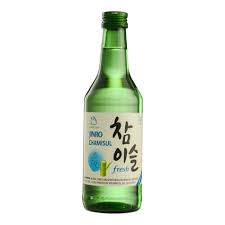
Soju: Korea’s Iconic Spirit
Soju: Korea’s Iconic Spirit frequently called Korea’s national drink, is a popular and well-recognized alcoholic beverage that has won people’s hearts worldwide. This clear, colourless liquor has significant cultural significance in Korea and is well-celebrated for its deliciousness and adaptability. This essay will delve deeply into the world of Soju, covering its history, cultural significance, and global impact.
Soju, what is it?
Source and Components
The history of Soju dates back centuries in Korea. Rice, wheat, and barley are the main ingredients. Alcohol content ranges from 16% to 25% after fermentation and distillation, making it stronger than beer but less potent than many Western spirits.
Classification
Traditional Soju and flavoured Soju are the two primary types of Soju. Flavoured Soju provides a broader selection of fruity and sweet flavours, but traditional Soju retains the original, unaltered taste.
Korean Traditional Drink Soju
In Korea, Soju is more than a beverage; it is an integral part of the country’s history, customs, and culture. It is commonly used in rites, ceremonies, and social gatherings as a sign of goodwill and camaraderie. Pouring and receiving Soju is accompanied by distinct etiquettes, stressing respect and companionship.
Alcoholic Beverages: Soju vs. the Rest
Soju’s unique qualities set it apart from other alcoholic drinks. Because of its transparency and silkiness, it is frequently contrasted with sake and vodka. But its distinctive flavour and cultural setting make it a memorable part of Korean identity.
Famous Soju Labels
Numerous soju labels enjoy widespread popularity in Korea. Jinro, Chum Churum, and Chamisul are the most well-known labels. Different brands have different tastes and textures because of production and consumer preferences in other areas.
Serving Soju Properly
Soju is traditionally consumed from a small, shallow glass known as a “soju glass.” It goes particularly well with a variety of Korean side dishes. Many unique soju cocktails and food combos are available for those interested in trying something new.
Global Intake of Soju
Although Soju has solid cultural roots in Korea, its fame has spread internationally. An increasing number of people worldwide are eager to try this Korean export, which is why you can find it in every liquor store or bar. Soju’s rising popularity worldwide has made it a serious contender in the global alcoholic beverage industry.
Consequences of Health and Limiting Use
Like any alcoholic beverage, Soju should be consumed in moderation. While partaking might be enjoyable, overuse has been linked to a variety of adverse health outcomes. Enjoying Soju’s flavours without the harmful effects requires responsible and moderate consumption.
Creating Your Soju
Making your own Soju at home might be fun if you’re into home brewing. However, safety procedures and regulatory requirements must be adhered to for the brewing process to be secure and pleasurable for all involved.
Soju in Contemporary Media
The music and film industries have both taken notice of Soju. Popularity and cultural significance are enhanced by its frequent use in popular Korean media such as films, TV shows, and music. The iconic status of Soju is reflected in the media’s portrayal of the beverage.
Traditional Korean food is ideal for pairing with Soju since it brings out the spirit’s full flavour. Foods like kimchi, barbequed meats, and spicy stews go well with the drink and bring out the best in each other’s flavours.
Special Soju Customs
Many exciting traditions are using Soju in Korea. For instance, turning one’s back to show deference while taking a shot. Grasping these customs will enrich your soju-sipping adventures.
Methods for Promoting Soju
Brands’ innovative approaches to advertising also play a role in Soju’s booming popularity. Attractive marketing strategies, high-profile support, and creative labelling contributed to Soju’s meteoric rise to fame.
Soju’s Promising Future
There is a lot of potential in Soju’s future. The beverage’s rising profile beyond Korea suggests new iterations in taste, presentation, and promotion are on the horizon. Soju is evolving with the times, and its journey is far from over.
Conclusion
Soju is much more than just an alcoholic beverage; it is also a representation of Korean heritage, customs, and brotherhood. Its one-of-a-kind flavour and adaptability have made it a hit worldwide. Even as Soju’s popularity spreads across the globe, it will always hold a special place in the hearts of those who have experienced its incomparable flavour and unique history.
FAQs
Does only Korea have a taste for Soju?
The demand for Soju has increased in many countries around the world.
What are some popular flavoured soju options?
Fruit and other sweet flavours like lychee, peach, and grape are some of the many that can be found in flavoured Soju.
Is there anything good for you in Soju?
Moderate consumption of Soju may have certain cardiovascular benefits, but excessive consumption can be harmful.
Can I make Soju at home?
Yes, it is possible to make Soju at home, but it requires following safety guidelines and regulations.
How has Soju influenced Korean pop culture?
Soju is frequently featured in Korean movies, dramas, and music, contributing to its iconic status and cultural significance.

Soju: Korea’s Iconic Spirit

